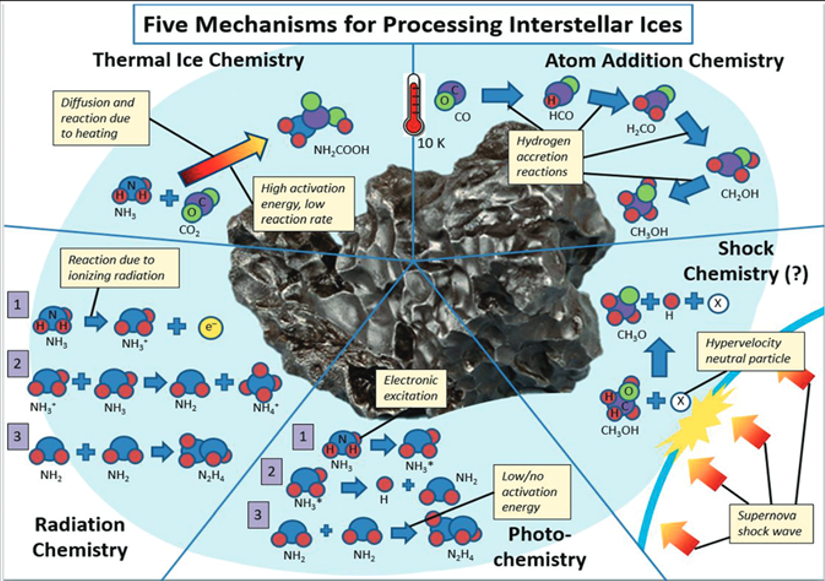
We are entering a new age in astronomy and space science the ‘Age of Chemistry’ that recognises we live in a ‘molecular universe’. Indeed today almost 300 molecules have been identified in the Interstellar medium (ISM) and circumstellar shells ranging from simple diatomics to >12 atoms including fullerenes (C60 and C70). With the commissioning of the JWST we can expect to detect more molecules including those believed to be the building blocks of life such as simple amino acids and a range of PAHs that may inform us on the growth and evolution of dust grains the starting point for planets.
Molecules containing all of the elements in DNA, including phosphorous, are being found such that the connection between chemistry in the ISM and planet forming discs and the probability of life emerging in exoplanetary systems is being explored. Concurrently observations of molecules in exoplanetary atmospheres is providing new insights into the rich chemical diversity of exoplanets and their atmospheres whilst also providing the opportunity for defining molecular biomarkers that may provide evidence for life on such bodies.
The major question is how are molecules formed in what appears to be an inhospitable environment for chemistry (low temperature and high vacuum)? The answer is believed to be that such chemistry occur on the surface of micron sized dust grains covered in icy mantles which are irradiated by star light, cosmic radiation subject to thermal cycling and shock waves.
Such questions require a combination of observation, laboratory investigations and models. In this project you will join largest international network of astrochemistry laboratory simulation facilities and astrochemical models to study molecular synthesis within icy mantles of dust grains. Your project will involve extensive periods at the Atomki centre in Hungary and the Dalton Cumbrian Facility in the UK whose accelerators produce beams of ions used to mimic cosmic rays. You will also perform experiments in the new astrochemistry laboratory at Kent where UV light and beams of electrons irradiated analogues of astrochemical ices and a wide range of analytical facilities are used to monitor the products of such synthesis.
For further details and discussion contact Prof. Nigel Mason.